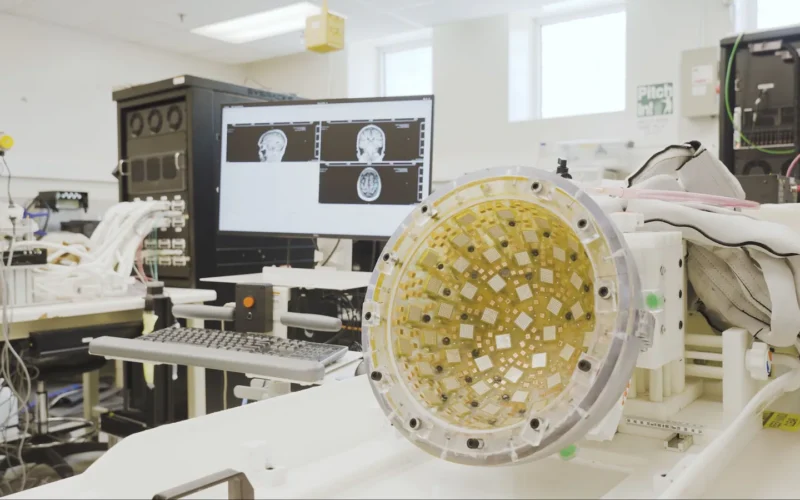Toronto, May 9, 2025 — In a groundbreaking development, Canadian researchers have launched the world’s first clinical trial using a custom-designed ultrasound helmet to treat Amyotrophic Lateral Sclerosis (ALS) by opening the blood-brain barrier a natural defense that typically blocks medications from reaching the brain.
Led by scientists at Sunnybrook Health Sciences Centre, the study is exploring whether the combination of intravenous immunoglobulin (IVIG) and focused ultrasound can deliver inflammation-reducing drugs directly into affected areas of the brain.
“We’re creating a temporary therapeutic window,” said Dr. Lorne Zinman, co-investigator and ALS clinic director at Sunnybrook. “It’s a first in ALS treatment research.”
Bill Traynor, a 70-year-old Toronto man diagnosed with ALS last fall, became the first patient to undergo the treatment. Once an avid skydiver and tennis player, Traynor now relies on mobility aids but sees the trial as a new purpose: “I’ll do anything to help people cure this.”
The two-part treatment involves standard IVIG infusions, followed by non-invasive ultrasound sessions using a helmet lined with 4,000 low-intensity transmitters. The ultrasound temporarily opens the blood-brain barrier in targeted areas, allowing medication to reach motor regions associated with leg and hand function.
MRI scans confirmed success: tiny white spots marked precisely where the medication had penetrated the brain tissue. “It’s there,” said Zinman. “And it stays in the tissue for up to eight weeks.”
Researchers will now monitor inflammation levels and neurological symptoms in Traynor and five other patients with sporadic ALS, which accounts for 95% of ALS cases in Canada. ALS is a fatal disease that affects 4,000 Canadians, with 80% of patients dying within five years of diagnosis.
The team hopes this approach could pave the way for treating other brain conditions, including glioblastoma and Alzheimer’s Disease, by breaking the long-standing obstacle of the blood-brain barrier. A portable version of the helmet is also in development.
“This is just the beginning,” said neuroscientist Kullervo Hynynen, who spent two decades developing the device.
For patients like Traynor, the trial brings not just scientific hope, but emotional light: “There’s this light at the end of the ALS tunnel it went from nothing to sunshine.”

